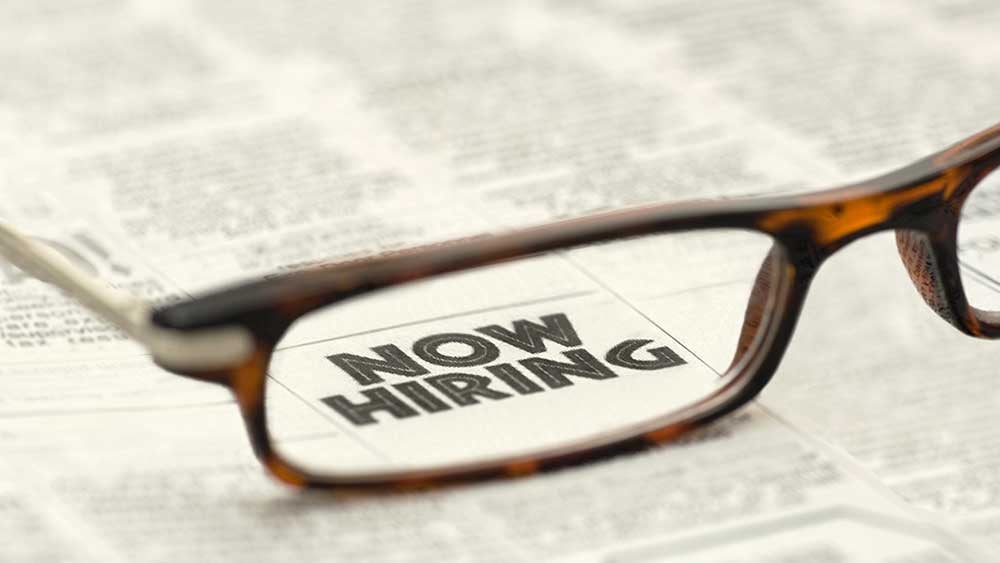The U.S. economy added 315,000 jobs in August, too hot for the Fed. But the Labor Department’s household survey showed a big jump in labor force participation, providing a quick jolt of optimism that the Federal Reserve may be able to engineer a soft landing for the economy. The Dow Jones industrial average initially turned higher, but gains were fleeting, likely because Russia said it won’t reopen its key gas pipeline to Europe as planned.
X
On closer inspection, however, a jobs report that numerous observers touted as just about ideal doesn’t live up to the ‘Goldilocks’ billing.
First the details:
The average hourly wage rose 0.3% on the month vs. expectations of 0.4%. Annual wage growth of 5.2% slightly trailed forecasts of 5.3%.
Job gains for June and July were revised down by a combined 105,000, but the 3-month average is a strong 378,000.
The unemployment rate rose to 3.7% from 3.5%. But that was only because more people joined the labor force (786,000), meaning they’re working or looking for work, than got a job (442,000).
The headline job and wage figures come from the Labor Department’s monthly survey of employers. The separate household survey details labor force participation, work status and unemployment.
Ugly Reversal Caps Bearish Week; What To Do Now
Did Labor Shortage Just Get Worse?
Going into the August jobs report, labor force participation had fallen in three of the past four months, driving the jobless rate to 3.5%, matching a half-century low. In that context, August’s jump in participation looked like great news.
Could it be the start of a new trend? On closer inspection, it looks more like a last hurrah, as the economy appears to be running out of workers.
The 16-19 age group saw labor force participation rise by 331,000, adjusted for seasonal factors. On an unadjusted basis, participation fell by a half million. Teens may have just been keeping summer jobs a few extra weeks.
The bulk of the labor force increase came among 25- to 54-year-olds. That’s good news, but here’s the issue: The percentage of prime-working-age adults with jobs jumped to from 80% to 80.3%. That’s just off the 80.5% pre-Covid peak, which was the highest since 2001.
While an 80.5% employment-to-population ratio may not be a ceiling for prime-age workers, it may take big wage gains to keep raising that level, which the Fed is determined to fight.
Here’s the other issue: Adult population growth is skewed heavily to those 65 and up, who much less likely to work than they were pre-Covid. For a deeper look at what ails the job market and economy, please read IBD’s weekend cover story.
Part-Time Job Gains
Friday’s jobs report shored up confidence in the strength of the job market. While the employer survey has showed strong growth, the household survey had shown a cumulative 168,000 drop in the ranks of the over the prior four months. August’s 442,000 increase seemed to undercut the case that the employer survey, which had shown a boost of 1.68 million jobs over the same time, was way off the mark.
But maybe not. August’s household survey also showed that the number of full-time workers fell by 242,000, while part-timers rose by 413,000.
Since March, full-time workers are down 383,000, while part-timers are up 335,000.
Dow Jones, Treasury Yields React To Jobs Report
Despite a strong start, the Dow Jones fell 1.1% in Friday’s stock market action. The S&P 500 lost 1.1% and the Nasdaq composite 1.3%.
The Nasdaq is still trying to snap a six-session losing streak since chair Jerome Powell signaled in his Jackson Hole speech that the Fed will keep policy tighter for longer, raising recession risks.
Through Friday, the Dow Jones has fallen 14.9% from its Jan. 4 all-time closing high and now remains just 4.8% above its June 17 closing low. The S&P 500 is up 7% since mid-June, but down 18.2% from its all-time closing high. The Nasdaq composite is 9,25% above its bear-market low, but remains 26.5% below its record high.
The summer stock market rally faltered after Powell’s speech because Wall Street now sees little hope for interest-rate relief until the economy goes through an extended period of subpar growth — or worse.
After the jobs report, markets were pricing in a 56% chance of another 75-basis-point move at the Federal Reserve’s Sept. 20-21 meeting. That was down from 70% odds before the employment report.
After the jobs data, the 10-year Treasury yield, which surged to a two-month high of 3.265% on Thursday, fell 7 basis points.
Be sure to read IBD’s The Big Picture every day to stay in sync with the market direction and what it means for your trading decisions.
Jobs Report Details
The leisure and hospitality sector added 31,000 jobs. Factory employment grew by 22,000.
Construction jobs rose by 16,000. Health care and social assistance payrolls rose 61,500. Retailers added 44,000 jobs, while transportation and warehousing jobs rose 5,000.
Please follow Jed Graham on Twitter @IBD_JGraham for coverage of economic policy and financial markets.
YOU MAY ALSO LIKE:
Top Growth Stocks To Buy And Watch
IBD Stock Of The Day: Solar Stock Turns A Profit, Near Buy Point
Catch The Next Big Winning Stock With MarketSmith
Image and article originally from www.investors.com. Read the original article here.

